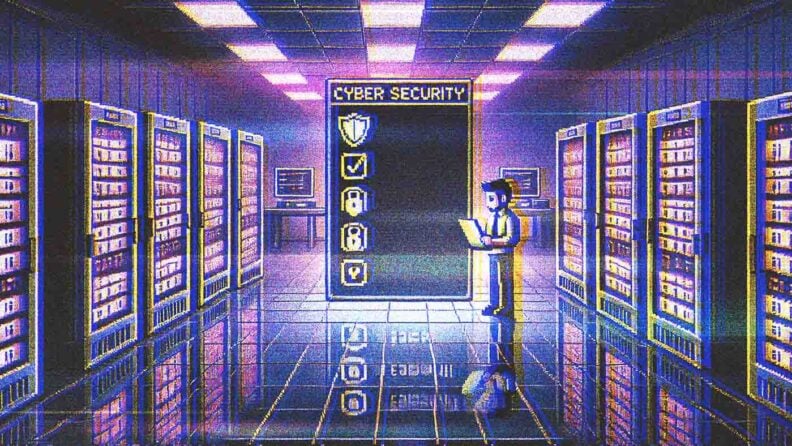In our hyper-connected world, the digital landscape is evolving faster than ever. From remote work to online banking, streaming to shopping, our reliance on technology grows daily. But with great connectivity comes great responsibility—and risk. Cyber threats, from ransomware attacks on schools to vulnerabilities in software supply chains, are no longer just IT department headaches; they’re everyone’s concern.
Fortunately, advancements in cybersecurity software provide powerful tools to detect, prevent, and respond to these threats, offering organizations and individuals alike a critical edge in the fight for digital security.
Staying ahead in this digital arms race doesn’t require a degree in cybersecurity. By adopting a few smart practices, you can significantly reduce your vulnerability and safeguard your personal and professional data. Drawing from lessons learned across various sectors, here are five critical strategies you must implement to safeguard your organization for a safer digital future.
1. Rethink the Fundamentals
You've probably heard it countless times: use strong passwords, enable multi-factor authentication (MFA), and stay on top of software updates. But understanding why these practices matter—and how they can be improved—is vital. Weak or reused passwords are among the leading causes of data breaches, allowing attackers easy access to sensitive systems. For instance, in K-12 education, districts are urged to enhance password protocols by using automatic password generation and storage systems to eliminate human error. Similarly, MFA adds a critical layer of security by requiring users to verify their identity with something they have (e.g., a phone) and something they know (e.g., a password).
2. Incident Response Planning
When a cyberattack occurs, your response time and preparedness are critical factors in determining the extent of damage. An incident response (IR) plan acts as a strategic roadmap for managing breaches, minimizing downtime, and swiftly restoring operations. Educational institutions, for instance, increasingly recognize the importance of robust incident response planning. Following a surge in ransomware attacks across school districts, officials have realized that early threat detection and immediate response are crucial to reducing recovery time and preventing further damage.
Organizations that test their IR plans recover significantly faster; one study found that companies with a formal incident response plan tested regularly can reduce the cost of a breach by an average of $2.66 million (source: IBM's Cost of a Data Breach Report 2023). The IR plan must detail processes for detecting threats, containing breaches, and recovering data. Regularly testing this plan through simulated cyberattacks—such as phishing exercises or social engineering deepfakes—helps identify technology and communication strategies vulnerabilities.
These drills highlight weaknesses and improve team coordination for schools and other organizations. Ensuring every team member, from IT staff to communications personnel, knows their role in managing a breach is essential for effective response and recovery.
3. Leverage Emerging Technologies
With the rapid growth of Artificial Intelligence (AI), machine learning (ML), and blockchain, businesses can now stay ahead of cyber threats in previously impossible and unimaginable ways. AI and ML can automate threat detection, learning from historical data to identify abnormal behaviors in real-time. Schools have adopted AI solutions to monitor network traffic for suspicious activity, enabling them to detect threats before they fully manifest preemptively.
Blockchain technology is also gaining popularity as a way to protect sensitive data. Unlike traditional databases, blockchain's decentralized nature makes it nearly impossible for cybercriminals to alter information. This makes it an excellent solution for securing sensitive data in industries like healthcare and finance and in sectors like education, where schools manage the personal data of minors.
Another advantage of these emerging technologies is their scalability. As organizations grow, so do their security challenges. AI-driven tools, for example, can scale alongside the organization, continuously learning and adapting to new threats, providing a future-proof solution against evolving attacks.
4. Fortify the Software Supply Chain
Securing your internal systems is just one piece of the cybersecurity puzzle. One of the most significant vulnerabilities today comes from third-party vendors and the software supply chain. The high-profile SolarWinds hack underscored how devastating a breach in a single vendor can be, compromising thousands of organizations across government, healthcare, and private sectors. This attack proved that no industry is immune when a key supplier's defenses are breached, emphasizing the need for more robust vendor risk management.
A report from the Ponemon Institute found that 51% of organizations experienced a data breach caused by a third-party vendor. Fortifying your software supply chain requires more than surface-level trust; it starts with rigorous vetting. Ask tough questions about vendors' security practices, demand adherence to industry standards, and confirm they follow secure coding protocols. Additionally, using automated tools to scan for vulnerabilities in your software supply chain continuously can help identify risks before they escalate into breaches.
5. Empower Your Employees
Your employees are both your first and last line of defense. Even with cutting-edge technology in place, human error remains one of the most common causes of security breaches. Ongoing training is essential. Phishing remains one of the easiest and most effective tactics used by cybercriminals, and without proper education, employees are likely to fall prey to these attacks.
Cybersecurity training should be more than an annual checkbox item. Employees should be encouraged to report suspicious activity without fear of retribution. An environment of openness and vigilance can significantly enhance an organization's security posture.
Securing Tomorrow Starts Today
The future of cybersecurity is unpredictable, but the steps you take today will directly impact how well-prepared you are for the challenges ahead. It's no longer a question of if an attack will happen but when. With these strategies, you can turn that eventual attack into a manageable disruption rather than a full-scale disaster.
Subscribe to The CTO Club's newsletter for more cybersecurity tips, tools, and best practices.




